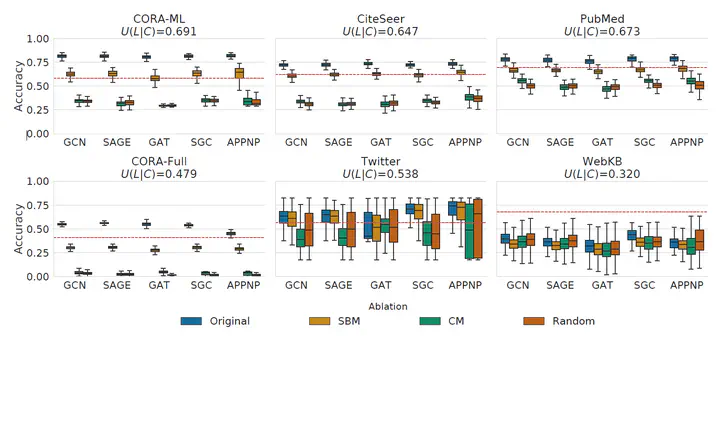On the Impact of Communities on Semi-supervised Classification Using Graph Neural Networks
 Graph comparing GNN accuracy across original and modified networks, showing community structures help performance on citation graphs but hinder results on WebKB, with correlation to uncertainty coefficients.
Graph comparing GNN accuracy across original and modified networks, showing community structures help performance on citation graphs but hinder results on WebKB, with correlation to uncertainty coefficients.
Abstract
Graph Neural Networks (GNNs) are effective in many applications. Still, there is a limited understanding of the effect of common graph structures on the learning process of GNNs. In this work, we systematically study the impact of community structure on the performance of GNNs in semi-supervised node classification on graphs. Following an ablation study on six datasets, we measure the performance of GNNs on the original graphs, and the change in performance in the presence and the absence of community structure. Our results suggest that communities typically have a major impact on the learning process and classification performance. For example, in cases where the majority of nodes from one community share a single classification label, breaking up community structure results in a significant performance drop. On the other hand, for cases where labels show low correlation with communities, we find that the graph structure is rather irrelevant to the learning process, and a feature-only baseline becomes hard to beat. With our work, we provide deeper insights in the abilities and limitations of GNNs, including a set of general guidelines for model selection based on the graph structure.